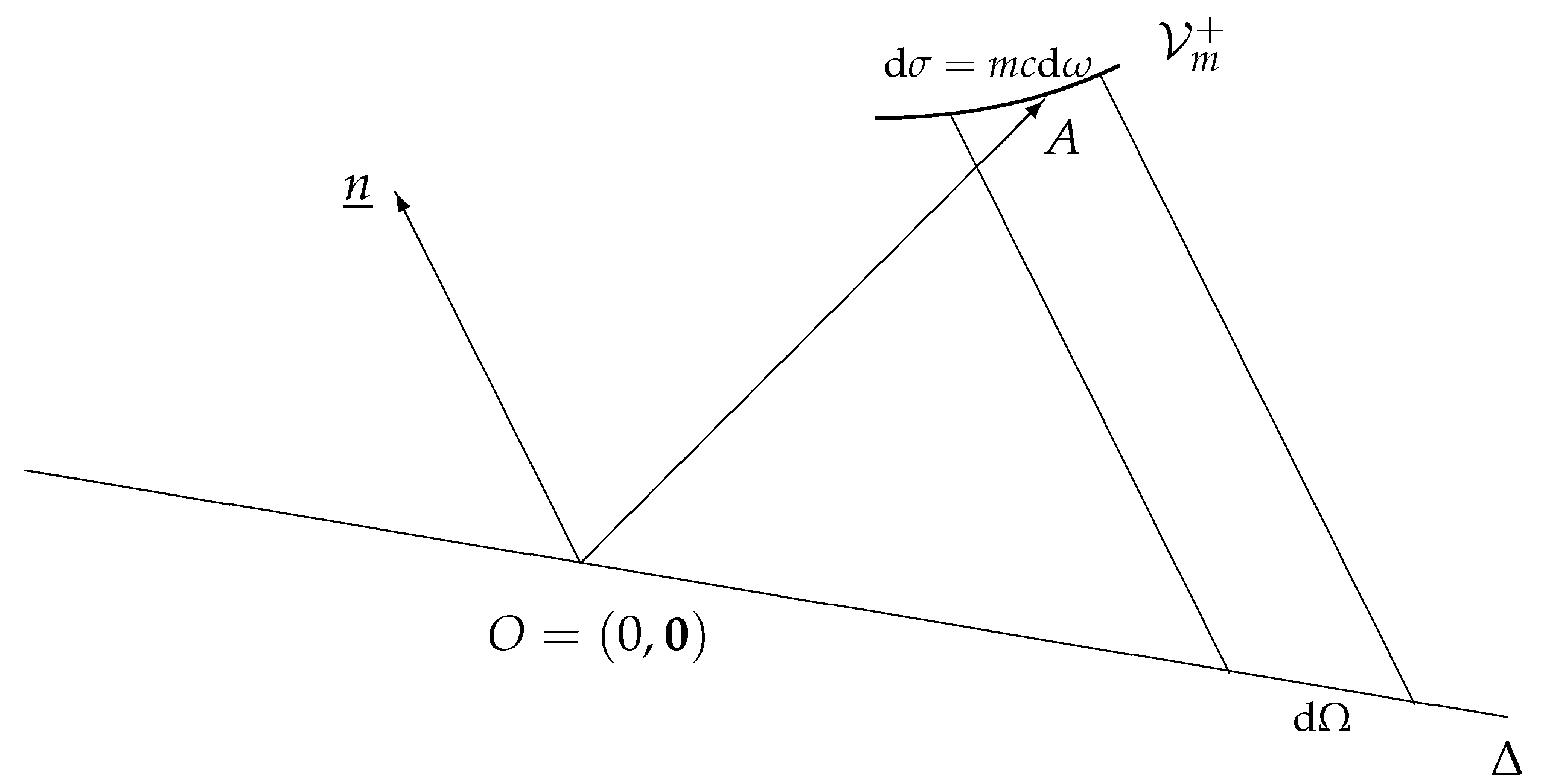Submitted:
28 February 2024
Posted:
29 February 2024
You are already at the latest version
Abstract
Keywords:
1. Preamble: Temperature, Heat, Entropy, that Obscure Objects of Desire
It is well known that entropy, alongside the spacetime interval, electric charge, and mechanical action, is one of the fundamental “invariants” of the theory of relativity. To convince oneself of this, it is enough to recall that, according to Boltzmann, the entropy of a macroscopic state is proportional to the logarithm of the number of microstates that realize that state. To strengthen this reasoning, one can argue that, on the one hand, the definition of entropy involves a integer number of microstates, and, on the other hand, the transformation of entropy during a Galilean reference frame change must be expressed as a continuous function of the relative velocity of the reference frames. Consequently, this continuous function is necessarily constant and equal to unity, which means that entropy is constant.
- (a)
- (b)
- (c)
2. Relativistic Covariance of Temperature According to de Broglie (1948)
3. Maxwell-Jüttner Distribution
3.1. Inverse Temperature 4-Vector
4. deSitter Material
4.1. de Sitter Geometry
4.2. Flat Minkowskian Limit of de Sitter Geometry
4.3. de Sitter plane waves as binomial deformations of Minkowskian plane waves
- (i)
-
First one has the Garidi [21] relation between proper mass m (curvature independent) of the spinless particle and the parameter :The quantity is a kind of at rest desitterian energy, which is distinct of the proper mass energy if .
- (ii)
- Then, with the mass shell parametrisation , one obtains at the limit :
4.4. Analytic Extension of dS Plane Waves for dS QFT
4.5. KMS Interpretation of Analyticity
5. de Sitterian Tsallis Distribution
5.1. Tsallis Entropy and Distribution, a Short Reminder
5.2. Coldness in de Sitter
5.3. A de Sitterian Tsallis Distribution
6. Conclusions
Funding
Conflicts of Interest
References
- de Broglie, L. Sur la variance relativiste de la température. Cahiers de la Physique 1948, 31-32, 1–11. [Google Scholar]
- Wu, Z. C. Inverse Temperature 4-vector in Special Relativity. Eur. Phys. Lett. 2009, 88, 20005. [Google Scholar] [CrossRef]
- Einstein, A. , Ueber das Relativitaetsprinzip und die aus demselben gezogenen Folgerungen. Jahrb. Rad. u. Elektr. 1907, 4. [Google Scholar]
- Planck, M. Ann Physik. Lpz. Ser. 1908, 26, 1–35. [Google Scholar]
- Ott, H. Lorentz-Transformation der Wärme und der Temperatur. Zeitschr. Phys. 1963, 175, 70–104. [Google Scholar] [CrossRef]
- Arzeliès, H. , Transformation relativiste de la température et de quelques autres grandeurs thermodynamiques. Nuov. Cim. 1965, 35, 792–804. [Google Scholar] [CrossRef]
- Landsberg, P. T. Does a Moving Body Appear Cool? Nature 1966, 212, 571–572. [Google Scholar] [CrossRef]
- Landsberg, P. T. Does a Moving Body Appear Cool? Nature 1967, 214, 903–904. [Google Scholar] [CrossRef]
- Landsberg, P. T.; Matsas, G. E. A. Laying the ghost of the relativistic temperature transformation. Phys. Lett. A 1996, 223, 401–403. [Google Scholar] [CrossRef]
- Sewell, G. L. On the question of temperature transformations under Lorentz and Galilei boosts. J. Phys. A: Math. Theor. 2008, 41, 382003. [Google Scholar] [CrossRef]
- Jüttner, F. Das maxwellsche gesetz der geschwindigkeitsverteilung in der relativtheorie. Ann. Phys. 1911, 339, 856–882. [Google Scholar] [CrossRef]
- van Dantzig, D. On the phenomenological thermodynamics of moving matter. Physica VI 1939, 673–704. [Google Scholar] [CrossRef]
- Taub, A. H. Relativistic Ranirine-Hugoniot Equations. Phys. Rev. 1948, 74, 328–334. [Google Scholar] [CrossRef]
- Synge, J. L. The Relativistic Gas; North-Holland Publishing Company, 1957. [Google Scholar]
- Gazeau, J.-P.; Graffi, S. Quantum Harmonic Oscillator: a Relativistic and Statistical Point of View. Boll.U.M.I. 1997, Ser.VII , XI-A, 815–839. [Google Scholar]
- Chacón-Acosta, G.; Dagdug Hugo, L.; Morales-Técotl, A. Manifestly covariant Jüttner distribution and equipartition theorem. Phys. Rev. E 2010, 81, 021126. [Google Scholar] [CrossRef] [PubMed]
- Curado, E. M. F.; Cedeño, C. E.; Soares, I. D.; Tsallis, C. Relativistic gas: Lorentz-invariant distribution for the velocities. Chaos 2022, 32, 103110. [Google Scholar] [CrossRef] [PubMed]
- Landau, L. D.; Lifshitz, E. M. The Classical Theory of Fields. Vol. 2 (4th ed.). Butterworth-Heinemann, 1980.
- Magnus, W. Formulas and Theorems for the Special Functions of Mathematical Physics. 3rd edition, Springer-Verlag, Berlin and Heidelberg, 1966.
- Bros, J.; Gazeau, J.-P.; Moschella, U. ; Quantum Field Theory in the de Sitter Universe. Phys. Rev. Lett. 1994, 73, 1746–1749. [Google Scholar] [CrossRef] [PubMed]
- Garidi, T. What is mass in desitterian physics?. arXiv:hep-th/0309104 (hep-th).
- Enayati, M.; Gazeau, J.-P.; Pejhan, H.; Wang, A. The de Sitter (dS) Group and its Representations, An Introduction to Elementary Systems and Modeling the Dark Energy Universe. Synthesis Lectures on Mathematics & Statistics (SLMS), Springer 2022.
- Tsallis, C. Possible generalization of Boltzmann-Gibbs statistics. J. Stat. Phys. 1988, 52, 479–487. [Google Scholar] [CrossRef]
- Tsallis, C. Nonadditive entropy and nonextensive statistical mechanics-an overview after 20 years. Braz. J. Phys 2009, 39, 337–356. [Google Scholar] [CrossRef]
- Abramowitz, M.; Stegun, I.A. Handbook of Mathematical Functions With Formulas, Graphs, and Mathematical Tables. Handbook of mathematical functions National Bureau of Standards (1964).



Disclaimer/Publisher’s Note: The statements, opinions and data contained in all publications are solely those of the individual author(s) and contributor(s) and not of MDPI and/or the editor(s). MDPI and/or the editor(s) disclaim responsibility for any injury to people or property resulting from any ideas, methods, instructions or products referred to in the content. |
© 2024 by the authors. Licensee MDPI, Basel, Switzerland. This article is an open access article distributed under the terms and conditions of the Creative Commons Attribution (CC BY) license (http://creativecommons.org/licenses/by/4.0/).




